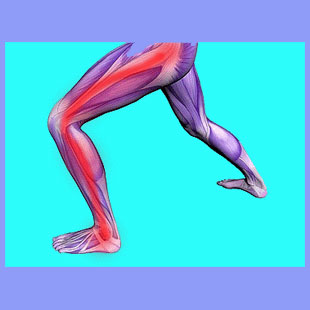
Unexplained sciatica describes symptoms that definitely exist, but are not traceable to an identifiable source location or mechanism. Although it is rare for a patient to receive the verdict of sciatica that is not linked to a suspected source, statistics show that this diagnostic pronouncement should be made far more often. Sciatica is most often theorized to be caused by one of several primary causations in the lower spine, including intervertebral pathologies, osteoarthritic processes and other typical structural irregularities, such as curvature abnormalities or vertebral alignment anomalies.
Furthermore, research shows that many of these suspected origins of sciatica are incorrect, yet they continue to be blamed in many instances when nerve interactions are not even proven to be occurring. This fact would make any objective observer question why idiopathic sciatica is not the diagnostic conclusion in many more patients than those who are deemed to be suffering from some often illogical supposition.
This dissertation explores the occurrence of unexplained sciatica that remains undiagnosed and seeks to explain why so many cases can not accurately fit into the small categorical boxes arranged by traditional medical science.
Unexplained Sciatica Myths
Doctors who are behind the times, as well as those who stand to profit from incorrect theories as to the causation of pain, often blame structural irregularities in the lumbar spine for causing sciatica, even without any evidence of a neurological dysfunction process taking place. These caregivers might witness a herniated disc, arthritic stenosis concern, abnormal curvature or displaced vertebral bone and assume that these curiosities must be pathological. Of course, countless research studies have concluded that there is little, if any, correlation between structural atypicalities, and the incidence of sciatica, or any other type of pain.
Sciatica symptoms do not have to be sourced from a structural issue in the lower spine. Well, technically, true sciatica does denote a lumbar spinal source, although pseudo-sciatica symptoms mirror those found in true spinally-motivated sciatica in every respect. Therefore, for the remainder of this essay, we will discuss “sciatica-like” symptoms, since the proposed causations do not involve actual anatomical irregularities in the lumbar spine.
Idiopathic Sciatica Truths
Sciatica symptoms can occur from many possible reasons, many of which are never even considered by typical diagnosticians within the lower back and leg pain arena:
Sciatica can be sourced from spinal issues in other parts of the vertebral column, such as the relatively common incidence of cervical spinal stenosis potentially causing virtually identical expressions to lumbar sciatica origins.
Unexplained sciatica symptoms can be a consequence of disease, including the very common occurrence of diabetic neuropathy in the legs and feet. Although this seems like an obvious point for a doctor to consider, we have corresponded with literally dozens of patients who indeed had diabetes, but their pain was mistakenly blamed on a coincidental structural “problem” in the lower back. The diagnostician never even inquired about a history of diabetes.
Sciatica symptoms can be caused by muscular concerns, such as imbalances and piriformis syndrome. These possibilities are rarely overlooked, but may be, especially by some varieties of physician, such as orthopedic spinal specialists.
Sciatica symptoms can occur due to localized nerve injury or dysfunction. Often, no oral history of injury to the leg, hip or foot is even requested by a diagnostician, who is more than happy to blame the pain on some innocent spinal scapegoat.
Sciatica suffering can certainly be traced to mindbody contributors, ranging from conscious stress to subconscious defense mechanisms to truly pathological somatization of internalized emotions.
More importantly than any of these definitive possible causes of sciatica is the simple truth that in many cases, no definitive origin can or will be identified as the reason to explain the pain. This is where the real trouble starts for patients, as we will investigate in the critical section below.
Unexplained Sciatica Lessons
When a patient does not demonstrate an objectively verified reason for pain, the diagnostician has one of 2 possible choices. They can tell the patient that no known process can be honestly and scientifically identified to cause the present expression. They can also find some plausible excuse and go with it, hoping to placate the patient and get them into some form of financially-rewarding treatment.
As we mention throughout the writings of our sites, diagnosis is a messy, time-consuming and unprofitable business, so it is no wonder that most doctors do not invest too much effort into it. Instead, it is better to guess, assume, or fabricate something that will not result in a gross negligence lawsuit and immediately recommend treatment.
This is the sad state of our current medical system. This is a system that has been stressed to the breaking point by government and private-sector insurance coverage nonsense, causing virtually the entire healthcare industry to buckle under ever-increasing monetary pressures. However, for the sake of focus, we will not digress too far off our current trajectory of this argument.
Regardless of which path is traversed by the diagnostician, the patient loses. In scenario one, the patient is told that this doctor can not diagnose the pain. Therefore, they move on to another doctor until some diagnosis is rendered, regardless of how ridiculous it may be. After diagnosis, they are placed in treatment.
In scenario two, the patient is immediately diagnosed, with a high statistical probability of this pronouncement being wrong, and placed into treatment.
Yes, you understand now. Either way, the patient is placed in treatment for a condition that is not likely to be the true cause of their suffering. If the diagnosis is sound, then symptoms will resolve. However, research statistics clearly show that sciatica rarely resolves with seemingly indicated care. This is usually due to simple misdiagnosis.
Sciatica Solutions
So, what can be done to combat the unbelievable incidence of mistaken diagnosis and failed therapy? Well, we propose two easy solutions:
First, doctors can spend more time on diagnosis and consider every possible cause for the current expression, instead of relying on antiquated,incomplete and obviously incorrect assumptions from decades past. This philosophy is gaining popular ground among doctors, since most truly want to help patients and recognize the glaring holes in the present diagnostic system. However, with the aforementioned financial emphasis on care being more important than the efficacy of patient therapy outcomes, the tide is turning far too slowly to make any difference for generations to come.
Finally, the alternate solution is for doctors to confidently proclaim that they do not know why the pain is occurring. Furthermore, they need to tell patients that this is excellent news, since no definitive causative process means that no surgery, no injections and no pharmaceutical slavery are needed. This alone will reassure the patient to such an extent that symptoms might alleviate through placebo reaction alone.
In order for this path to work, patients need to be able to hear this news and realize how fortunate they are not to be labeled with an incorrect diagnosis, thereby avoiding further injury via unnecessary treatment. Is this likely to ever occur? No.
We have been thoroughly conditioned to seek the answers to all matters of health externally, rather than see the truth that so many crises begin from within and need to be solved in the same manner.
Is this an oversimplification of the problem and solution? Maybe. However, unless patients become more learned and stop demanding pills to relieve every pain in life, doctors will not stop blaming innocent structural issues or providing the deadly doses of pharmaceutical poison that do nothing to cure us, but accomplish plenty to undermine our best efforts toward health and wellness.
Our main point here is to remember that a lack of diagnosis is not necessarily a bad thing. Sure, the pain might not go away, but at least you will not be subjected to worse consequences than just unexplained sciatica. What could be worse?
Well, let’s mention a few consequences of misdirected treatment that we have discovered in our last decade of patient-driven research: Drug addiction, surgical butchery, pharmaceutical interactions, disability, paralysis and death. We have seen all of these occur due to treatment that was rendered for mistakenly diagnosed sciatic nerve pain. Sure, we all want a diagnosis. However, this diagnosis must be accurate in order for it to be helpful.






